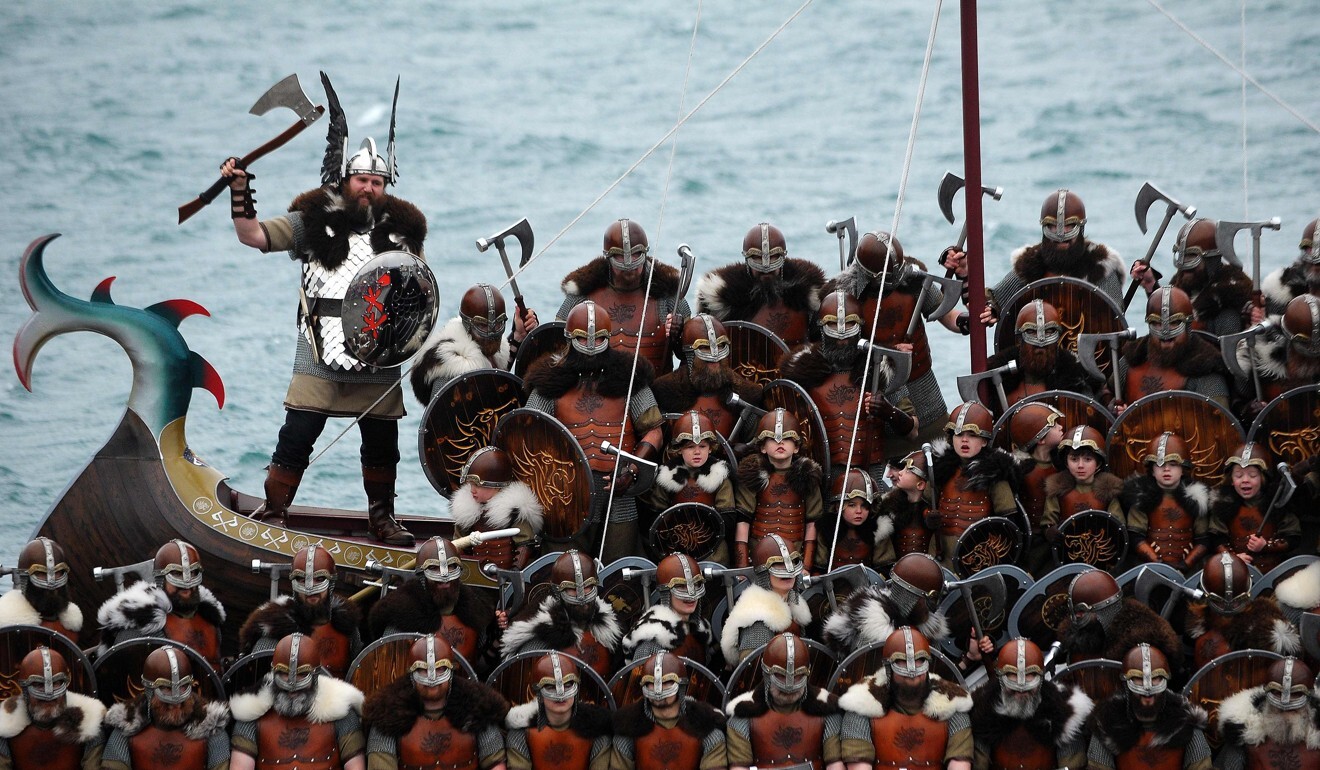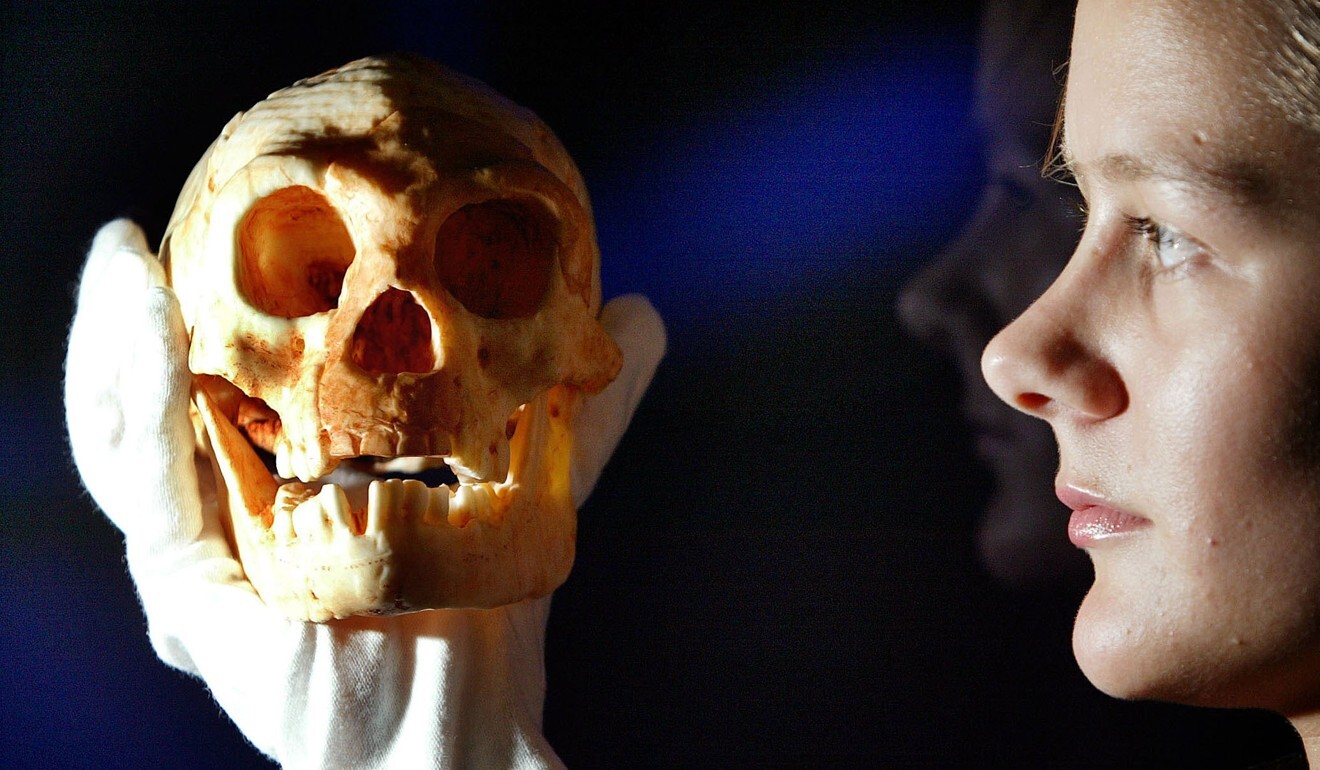
Think 2020 is weird? Spare a thought for 1010: a frozen Nile, ‘giants’, killer Vikings and a Farsi Game of Thrones
- With all the craziness of life in 2020, what better time than now to look back a thousand or so years and find out what was making the headlines in 1010?
- Amid a warmer climate and a short-lived Pope, Rob McKenzie uncovers Viking slaughters, a cold snap in Egypt and some surprisingly tall Swedes
As 2020 dawned I had an idea for an article. I wondered what it would be like to look back at the year 1010: halfway between the birth of the Common Era and now. Were people happier and wiser, or benighted and foolish? It would be fun.
London’s horrible history of plagues, death and disease

My idea had been to take our present-day torrent of news, all the momentarily urgent matters that are forgotten when the next wave comes along, and contrast it with the distilled events of 1010 to provide a smidgen of perspective. But now, even as the many waves have given way to one big wave, the deep breath of perspective remains useful. So let us consider 1010, and see what we might learn.
The Hungarian doctor who gave us hand-washing
First, a quick fly-by of the state of the world in 1010: the tallest structure on Earth was the Great Pyramid of Giza, already 35 centuries old. The global population was somewhere around 300 million. The Northern Song dynasty reigned in China; the Mayan civilisation in Central America was in its long decline; the Caliphate of Cordoba was beset by infighting. In Rome, the Pope was Sergius IV, son of a shoemaker – he served three years as pontiff and the cause of his death might have been murder. And backtracking the slow grind of plate tectonics, America and Europe were about 25 metres nearer one another, and ocean levels about 360mm lower.
Now let us look at four of the headline stories of 1010 and see what light they might cast on the present day. They concern climate, Vikings, the relationship between cities and human height, and fantasy literature.
1. NILE FREEZES AS COLD SNAP SLAMS CAIRO
The natural world provided the most startling newsflash of 1010: for though this was the Medieval Warm Period in much of the world, in Egypt the Nile froze for only the second time in recorded history – the first being in 829.

Early English climatologist HH Lamb wrote in 1966’s The Changing Climate that the Nile oddity was presumably attributable to “a northward shift of the anticyclone belt as characteristic of the epoch and much cold Siberian air occasionally reaching the Mediterranean”.
Anticyclones are downward winds that spin colder air down to the surface, warm it up in the process and then convey that air to wider weather patterns.
2. VIKINGS DISCOVER AMERICA, SLAUGHTER LOCALS
Based on Einar Haugen’s translation of the Vinland Sagas, 1010 is the approximate date when their explorer Thorfinn Karlsevni was trying to start a settlement in North America.
Karlsevni was a merchant from Iceland who, in search of richer lands, had led his posse to the Greenland settlements founded by Erik the Red. Karlsevni then took a team of 160 souls to the New World, again in search of resources. The site of their landfalls is reckoned to be between Labrador and New England.

The land they first found was a place of “great forests and many animals”, according to the Sagas. The colonists struggled during the first rough winter, sailed south in the spring, settled anew, traded with the natives, fought with the natives, and decided to return home. As they sailed back north they did a horrible thing: “On the shore they found five savages asleep, dressed in leather jackets, and beside them vessels containing animal marrow mixed with blood. Karlsevni judged that these men must have been sent out as spies from this country, and killed them.”
3. 1010: A TIME OF TALL MEN
In 1010 the world’s biggest city, according to the late political scientist George Modelski, was Baghdad, home to somewhere north of a million people – the only city that could claim this distinction.
The biggest city in northern Europe, Paris, was perhaps one-tenth the size of Baghdad then.
According to a fascinating study by the Ohio State University economist Richard Steckel, this lack of big cities meant people were taller.
By comparing studies of skeletal data for northern Europe spanning the 9th through 19th centuries, Steckel concluded that at 173.4 centimetres, men of the early Middle Ages were nearly as tall as men today – but beginning in the 12th century they would grow shorter, and by the 1700s had lost 6.4cm in height. One of the underlying studies even found that the average Swedish man in the 10th-11th century stood 176cm tall.

Steckel suggests the dominance of agrarian society was an important reason for this time of tall men in 1010, though it was not the only reason.
For example the same warm weather that was encouraging Vikings to venture west greatly benefited agriculture, and the smaller populations of that era could pursue prosperity by moving their crops and animals to the lands that had gained the most.
This was a healthier way of life than would come to characterise cities, which Steckel describes as health hazards: crowded conditions created pathways for disease, and competition for resources led to “immiseration during industrialisation”, with rising inequality that weakened the poor and stunted their growth. Cities rose in tandem with greater trade, which sped the spread of the pathogens that would devastate much of the world in the 14th century.
As Steckel writes: “Urban areas were bad for health, as indicated by their high mortality rates and the small statures of those who resided in such places during a significant portion of their childhood.”
Conclusion: Cities are efficient, both for commerce and disease; but the rural life that prevailed in 1010 does in many ways seem happier than the urban life that dominates today.
4. FARSI FANTASY BEST-SELLER FORETELLS GAME OF THRONES
Events dated to 1010 are often estimates, at best. But there are exceptions.
The epic Shahnameh, or Book of Kings, is explicitly connected to 1010. The reason? When the poet Abu’l-Qasim Ferdowsi finished this opus of 50,000 to 60,000 rhyming couplets, he wrote down the date – one can imagine him in his study in Baghdad so relieved to finally lay down his quill and his corrections knife, and wanting to commemorate the end of his toil. The date he wrote corresponds to March 8, 1010.
The Shahnameh is a semi-mythological, semi-historical telling of the history of the shahs of Iran. It is violent, amusing and eloquent. You could compare it to Game of Thrones, with its sprawling battles and fair maidens, giant monsters and fierce warriors with “their livers’ blood afoam upon their lips”, according to the 1905 Warners translation.
And as bad guys go it is hard to top Shahnameh villain Zahhak. What a despot.
Example: he has two youths a night sacrificed so the palace cook can scoop out their brains to feed to snakes, but two pious men who are revolted by this practice become palace cooks and kill only one youth a night, mixing his brains with sheep brains for volume and letting the second youth survive. After 200 are saved, they are sent into the desert with a supply of goats and sheep and become the Kurds.
When Zahhak is toppled his minister Kundrav gets in a fair quip: “For like a hair / From dough has thou departed from the throne / Of sovereignty.”
These characters prefer noble death to hairy dough, obviously. The chieftain Kubad exemplifies this when warned that going into battle against the younger foe Barman risks ending his life: “The sky,” Kubad replied, “Gave me my share long since, and he whose hour / Hath come will have to die where’er he be: that time is not ill-timed at any time.”
In sum the Shahnameh falls into the category of “evening stories ”, a term the Baghdad bibliographer Ibn al-Nadim used a generation earlier to describe yarns such as One Thousand and One Nights.
Conclusion: Again an easy one: the love of a good evening story is part of what makes us human.
Similarities, differences
It is amazing to think that all these things happened in the single year 1010 – Egyptians worrying about weird weather, Vikings sailing west brave and vicious, farmers in northern Europe tending to bountiful vines, and in Baghdad a poet completing an odyssey that looked back into time, just as we are doing in this essay.
What seems essentially different and what is the same between now and 1010?
Our physical world is full of new things. Cities are where most people live today and global citizens are connected with a speed that for most of history would have seemed impossible. Our knowledge of geography and science is vastly improved.
But our aspirations and fears, our pursuit of prosperity and our love of a good story remain constant.

Our outside has changed far more than our inside.
Glenn Lowry, director of New York’s Museum of Modern Art, has defined “thinking modern” as “mostly being aware of the various similarities and differences with which, and thanks to which, we exist in the world. … Being modern means understanding that these differences contribute to making us live in an exciting and stimulating world, and not in a fragmented world.”
By the mere act of considering the past we gain the calm of perspective that we risk losing when all eyes are fixed on the present. By being aware of similarities and differences across time we gain a sense of being a community across time.

In my reading, the work that most strongly provided this sense of connection to the people of 1010 was Health Care in Eleventh-Century China by the historian Nathan Sivin. He writes that this was a time of more flux than usual, and medical practitioners ranged from elite physicians, to roving curers known as “bell-ringing doctors”, to diviners at the village temple.
But amid this variation was social unity. As Sivin writes: “Chinese a millennium ago often thought of themselves as the sum of all their obligations to others and of all the obligations of others to them. In this view a person is a nexus of social relationships with kin, friends, authority figures, and others. The sense of self pertinent to health care was that of someone situated in a stable family and community.”
Who knows what hindsight will someday teach us about our conduct in the current crisis. But in many ways it seems to have increased our sense of togetherness and I hope history will show that, like those distant Chinese, we valued others as much as we value ourselves.
Rob McKenzie is a writer and editor in Abu Dhabi

